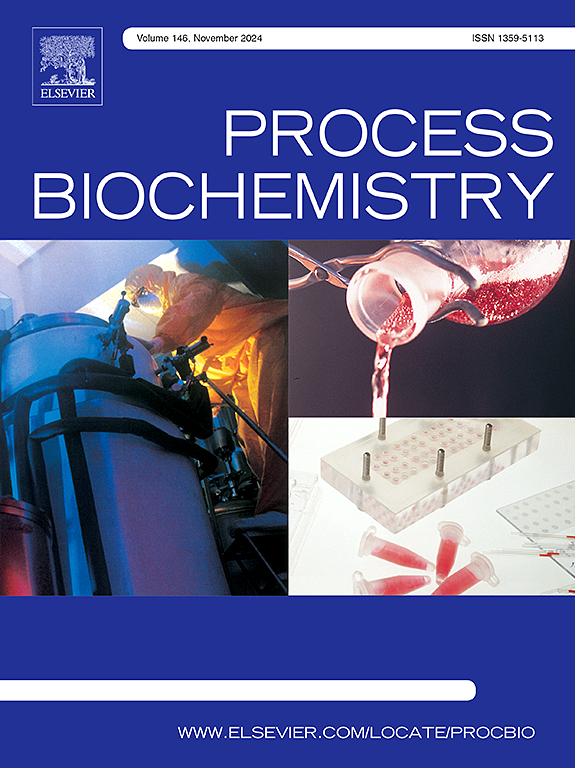Purification, characterization, and toxicity of antioxidative peptides from ultrasonicated chickpea (Cicer arietinum L.) protein hydrolysate
IF 4
3区 生物学
Q2 BIOCHEMISTRY & MOLECULAR BIOLOGY
引用次数: 0
Abstract
This study aimed to assess the purification, characterization and toxicity of antioxidative peptides from ultrasonicated chickpea protein hydrolysate (UCPH) by enzymatic hydrolysis. The UCPH was purified sequentially using ultrafiltration and fast protein liquid chromatography (FPLC). The < 3 kDa fraction (UCPH-1) from ultrafiltration was further purified using FPLC after demonstrating strong lipid-peroxidation inhibition activity (ferric thiocyanate (FTC): 49.54 % and thiobarbituric acid reactive species (TBARS): 55.42 %). The F6 fraction from FPLC was found to be an F6 peptide (UCPH-1-F6) with an amino acid sequence of MLRVYLR, which demonstrated a greater lipid-peroxidation inhibitory activity (FTC: 55.62 % and TBARS: 62.20 %). The UCPH-1-F6 peptide also showed potent antioxidant properties. In addition, the molecular docking studies showed that the MLRVYLR exhibited hydrogen-bonds interaction with 1,1-diphenyl-2-picrylhydrazyl (DPPH) by CDOKER. The MLRVYLR showed no toxicity properties to the brine shrimp lethality, which indicates it is a safe peptide. These results suggest that the purified peptide derived from ultrasound chickpea protein hydrolysate has potential antioxidant properties and can be used in functional food, nutraceuticals, and the pharmaceutical industry.
超声鹰嘴豆(Cicer arietinum L.)蛋白水解物中抗氧化肽的纯化、表征和毒性研究
本研究旨在评价超声鹰嘴豆蛋白水解物(UCPH)的酶解纯化、表征和抗氧化肽的毒性。采用超滤和快速蛋白液相色谱(FPLC)对UCPH进行了纯化。超滤后的<; 3 kDa组分(UCPH-1)显示出较强的脂质过氧化抑制活性(硫氰酸铁(FTC): 49.54 %,硫代巴比妥酸活性物质(TBARS): 55.42 %),用FPLC进一步纯化。FPLC的F6片段是一个氨基酸序列为MLRVYLR的F6肽(UCPH-1-F6),具有较强的脂质过氧化抑制活性(FTC: 55.62 %,TBARS: 62.20 %)。UCPH-1-F6肽也显示出强大的抗氧化性能。此外,分子对接研究表明,通过CDOKER, MLRVYLR与1,1-二苯基-2-苦味酰肼(DPPH)发生了氢键相互作用。MLRVYLR对卤虾的致死性无毒性,是一种安全的肽。以上结果表明,从鹰嘴豆蛋白水解物中提取的纯化肽具有潜在的抗氧化性能,可用于功能性食品、保健品和制药行业。
本文章由计算机程序翻译,如有差异,请以英文原文为准。
求助全文
约1分钟内获得全文
求助全文
来源期刊

Process Biochemistry
生物-工程:化工
CiteScore
8.30
自引率
4.50%
发文量
374
审稿时长
53 days
期刊介绍:
Process Biochemistry is an application-orientated research journal devoted to reporting advances with originality and novelty, in the science and technology of the processes involving bioactive molecules and living organisms. These processes concern the production of useful metabolites or materials, or the removal of toxic compounds using tools and methods of current biology and engineering. Its main areas of interest include novel bioprocesses and enabling technologies (such as nanobiotechnology, tissue engineering, directed evolution, metabolic engineering, systems biology, and synthetic biology) applicable in food (nutraceutical), healthcare (medical, pharmaceutical, cosmetic), energy (biofuels), environmental, and biorefinery industries and their underlying biological and engineering principles.
 求助内容:
求助内容: 应助结果提醒方式:
应助结果提醒方式:


